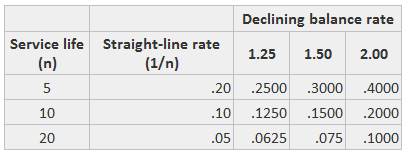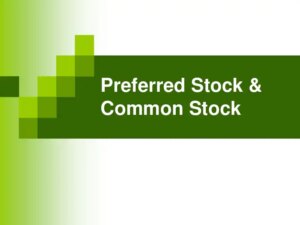
In the next compound period, interest is calculated on the total of the principal plus thepreviously-accumulated interest. This is how much you’re going to contribute to your investment or pay off your debt. This flexibility allows you to calculate and compare the expected interest earnings on various investment scenarios so that you know if an 8% return, compounded daily is better than a 9% return, compounded annually. The more frequently that interest is calculated and credited, the quicker your account grows.
- Under simple interest, the principal is multiplied by the interest rate so no compounding occurs.
- The rate of return on many investments is speculative, so entering an average number can give you an idea of how much you’ll earn over time.
- You can also use this calculator to solve for compounded rate of return, time period and principal.
- Like the snowball rolling down the hill, as your wealth grows, it picks up momentum growing by a larger amount each period.
Much like a snowball at the top of a hill, compound interest grows your balances a small amount at first. Like the snowball rolling down the hill, as your wealth grows, it picks up momentum growing by a larger amount each period. The longer the amount of time, or the steeper the hill, the larger the snowball or sum of money will grow. Compounding can help fulfill long-term savings and investment goals, especially if you have time to let it work its magic over years or decades.

Three Ways To Compound Your Wealth Faster!
Use a daily compound interest calculator to better determine your day-to-day rates. Compound interest is the formal name for the snowball effect in finance, where an initial amount grows upon itself and gains more and more momentum over time. It is a powerful tool that can work in your favor when saving, or prolong repayment for debts.
The conventional approach to retirement planning is fundamentally flawed. It can lead you to underspend and be miserable or overspend and run out of money. This book teaches you how retirement planning really works before it’s too late. You only get one chance to retire, and the stakes are too high to risk getting it wrong. This course will show you how to calculate your retirement number accurately the very first time – with confidence – using little-known tricks and tips that make the process easy.
Interest may compound on a daily, monthly, annual or continuous schedule. As preferred stock definition you can see, the more frequent the compounding, the more interest will be earned. Therefore, daily compounding yields more interest than monthly, quarterly, or annually compounded interest. We can also select an annual interest rate in the daily compound interest calculator. To get the same result in the calculator using the annual interest rate, all we do is multiply the daily interest rate by 365.
How Does Compound Interest Grow Over Time?
Here are some frequently asked questions about our daily compounding calculator. Note that if you wish to calculate future projections without compound interest, we have acalculator for simple interest without compounding. Compound Interest is calculated on the principal amount and also on the interest of previous periods. Sign up to get updates from MoneyGeek including how to overcome your financial headwinds, hack your finances, and build wealth. Using the rule of 72, you would estimate that an investment with a 5% compound interest rate would double in 14 years (72/5).
How Much Money Do I Need To Retire?
Compound interest is often referred to as “interest on interest” because interest accrued is reinvested or compounded along with your principal balance. It is the interest earned on both the initial sum combined with interest earned on already accrued returns. Our online tools will provide quick answers to your calculation and conversion needs.
It’s important to remember that these example calculations assume a fixed percentage yearly interest rate. Compound interest, on the other hand, puts that $10 cb contingent liability in interest to work to continue to earn more money. During the second year, instead of earning interest on just the principal of $100, you’d earn interest on $110, meaning that your balance after two years is $121.
Daily compounding with annual interest rate
Use the prior assumptions of an initial value of $1,000 and 200 days, and now set the interest rate to “annual” and 10.95%. This will yield the exact same amount as the daily interest rate of understanding your small businesss current assets 0.03%. This is due to earning interest on interest or, in other words, compound interest. The faster you earn interest, the more your investment will grow, or in the case of debt, the more money you will have to repay. You may, for example, want to include regular deposits whilst also withdrawing a percentage for taxation reporting purposes.




